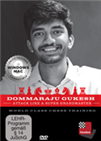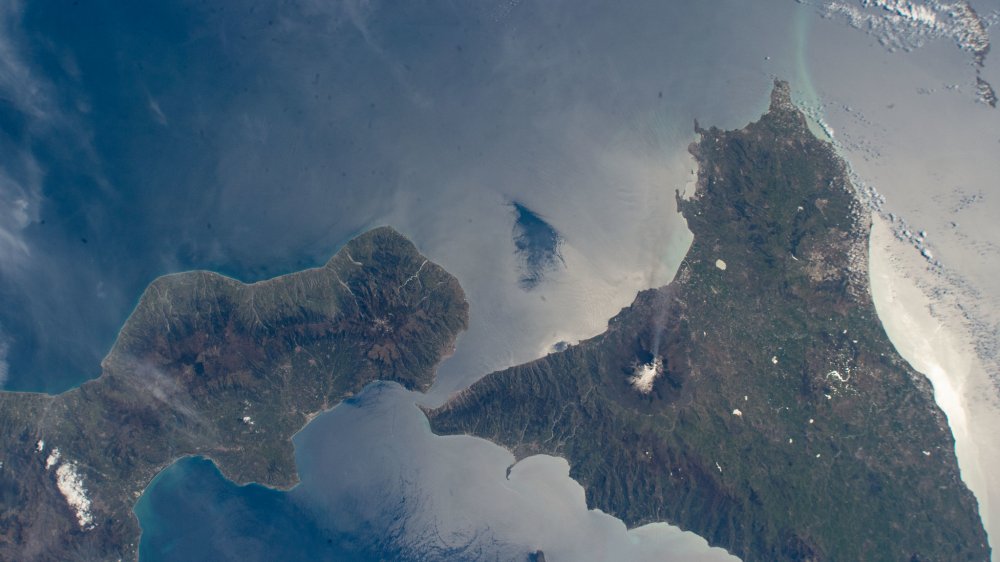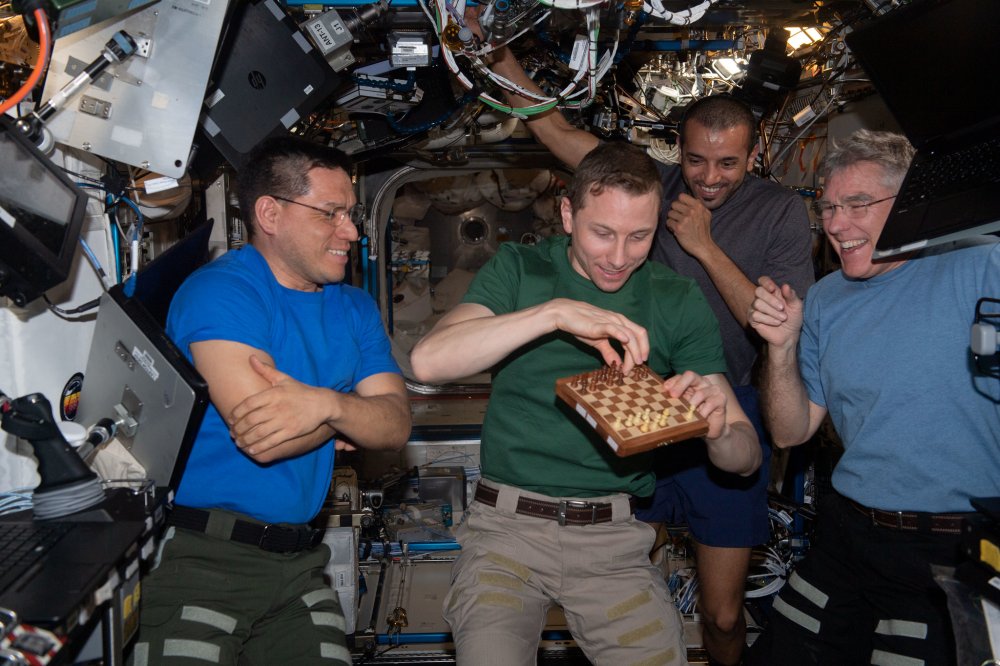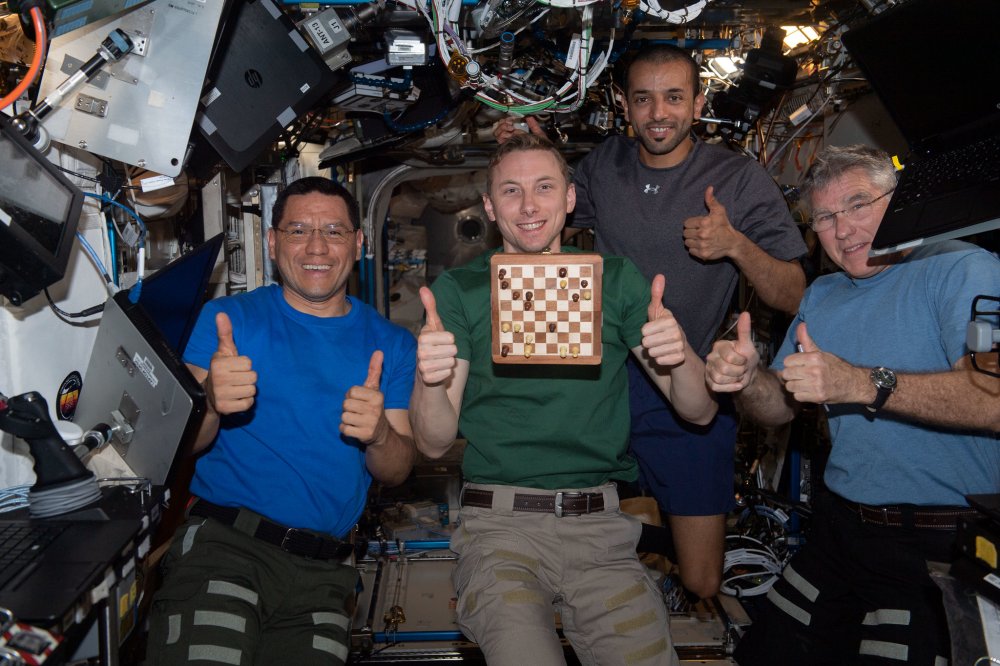The International Space Station (ISS) has been in orbit around the Earth for over 9,000 days. The 109-metre-long station is operated under the leadership of NASA by 16 countries and five space agencies, including NASA and the European ESA. The ISS orbits the Earth at an altitude of about 400 km in an easterly direction and needs 93 minutes at a speed of about 28,800 km/h for a complete orbit. In fact, the station loses about 50 to 150 metres of altitude every day, which is compensated for by an acceleration manoeuvre.
Ideas of a permanently manned space station have existed in the USA since the 1960s. When NASA began concrete planning in the 1980s, they realised that the cost of operating such a station would be exorbitant. After the end of the Cold War, however, there was cooperation with the Soviet Union, or later Russia. The Soviet Union had already installed its MIR space station in space in 1986 and the USA eventually joined the programme. The MIR was abandoned in 2001.
 In this Fritztrainer: “Attack like a Super GM” with Gukesh we touch upon all aspects of his play, with special emphasis on how you can become a better attacking player.
In this Fritztrainer: “Attack like a Super GM” with Gukesh we touch upon all aspects of his play, with special emphasis on how you can become a better attacking player.In parallel, NASA launched its ISS project in cooperation with other international space organisations and countries. The station has a modular design, and the individual components have been gradually assembled by Russian and American expeditions in over 40 flights since 1998. The station is being successively expanded.
The first long-term ISS crew expedition moved into the station on 2 November 2000 and was brought there on a Russian Soyuz-TM 31. The astronauts and cosmonauts William Shepherd (USA), Yuri Gidsenko and Sergei Krikalyov (Russia) remained at the station for 136 days, until 19 March 2001. On 20 August 2001, ISS Expedition 2 arrived at the station on a NASA space shuttle. Susan Helms was the first woman to occupy the ISS.
After initially only Russian cosmonauts and US astronauts provided the crew of the ISS, other countries also provided personnel after 2006. However, US-Russian cooperation suffered greatly after Russia’s attack on Ukraine and the US support measures for Ukraine.

As early as July 2022, Yuri Borisov, head of the Russian space agency Roskosmos, had declared that Russia would withdraw from the ISS project after 2024. Russia would fulfil all its contractual obligations until then, but would build its own station in parallel. It is possible that Roskosmos will continue to use the Russian modules of the ISS.
The crew of ISS Expedition 69 is currently on the ISS. The seven-member crew includes Andrey Fedyaev, Dmitri Petelin and Sergey Prokopyev (Russia), Frank Rubio, Stephen Bowen and Woody Hoburg (USA) and Sultan Alneyadi (VAR).

The official portrait of the Expedition 69 crew: (from the left) flight engineers Frank Rubio of NASA, Dmitri Petelin of Roscosmos, Sultan Alneyadi of the United Arab Emirates, Woody Hoburg of NASA, Stephen Bowen of NASA, Andrey Fedyaev of Roscosmos and Commander Sergey Prokopyev of Roscosmos.
In addition to the scientific programme in the ISS, the maintenance of the station, which also includes some outdoor expeditions, the team members have time to take breathtaking photos of space and of the Earth.

Self-explanatory controls and cable connections

Outreach: NASA astronaut Stephen Bowen and United Arab Emirates (UAE) astronaut Sultan Alneyadi are seen in their spacesuits during a seven-hour and one-minute spacewalk, during which they laid cables and applied insulation
 Let us learn together how to find the best spot for the queen in the early middle�game, how to navigate this piece around the board, how to time the queen attack, how to decide whether to exchange it or not, and much more!
Let us learn together how to find the best spot for the queen in the early middle�game, how to navigate this piece around the board, how to time the queen attack, how to decide whether to exchange it or not, and much more!
View of the Earth

View of Sicily with the volcano Etna
Or else they play chess. The biggest chess fan on the team is US astronaut Woody Hoburg.

Frank Rubio, Woody Hoburg (both NASA), Sultan Alneyadi from the United Arab Emirates (UAE) and Stephen Bowen from NASA playing chess
Hoburg not only remembered to bring a chess set with him to the ISS, but also made sure that the pieces were magnetic, which is a particularly useful feature on the ISS.
Woddy Hoburg plays a remote game against the controllers in the mission centre at NASA’s Johnson Space Center in Houston, Texas. There is time for one or two moves a day between appointments. Hoburg has won the first game.
Or he plays against his colleagues, as here against the cosmonaut Sergey Prokopyev. The game took place in the dome of the International Space Station. The ISS was 259 miles above the Colombian-Venezuelan border at the time this picture was taken.

Where to put the beaten figures
Links































